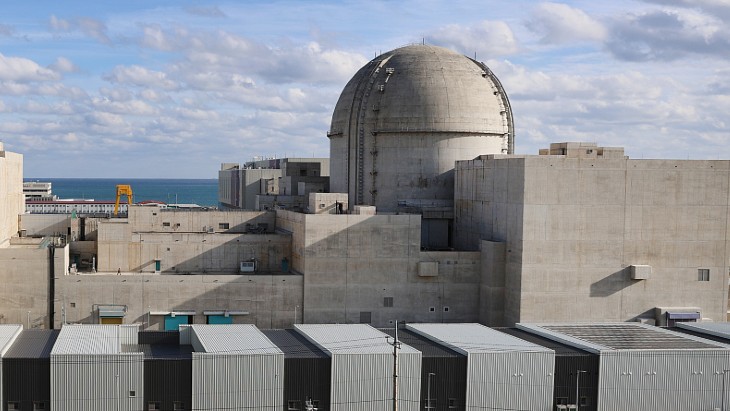The U-Battery consortium, led by Urenco, has registered its micro-modular reactor technology for pre-licensing vendor design review with the Canadian Nuclear Safety Commission (CNSC).
U-Battery is a 'micro' nuclear reactor which will be able to produce local power and heat for a range of energy needs, mainly targeting the markets for industrial power units and off-grid locations. Powered by Triso fuel, each helium gas-cooled unit produces 10 MWt, can deliver up to 4MWe as electricity and can provide 750 degrees Celsius of process heat. Triso fuel comprises spherical particles of uranium fuel with a triple carbon-coating which effectively gives each tiny particle its own primary containment system.
The concept design of U-Battery was developed by the Universities of Manchester, the Dalton Institute (UK) and the Technology University of Delft (Netherlands) after the project was initiated in 2008 by Urenco. It is being developed by a consortium of Amec Foster Wheeler, Cammell-Laird, Laing O'Rourke and Urenco.
The consortium aims to have a demonstration reactor operating by 2025, and estimates that by the 4th-of-a-kind unit, U-Battery's capital costs will be between £40 and £70 million ($49 and $86 million).
U-Battery said the review would seek to verify in principle the acceptability of the technology in Canada, and identify ways to increase the regulatory efficiency of future licensing. U-Battery general manager Steve Threlfall said, "This is an important step forwards for U-Battery. It is a mark of the progress we have made in our design, and builds on the significant headway we have made last year in Canada and other international markets." The consortium will be meeting soon with the CNSC to discuss the next stages, he added.
Speaking at the UK Nuclear Industry Association's conference on small modular reactors (SMRs) earlier this week, Threlfall said the Canadian market for U-Battery could be "very, very large", with more than 300 locations, each of which could use between one and six batteries.
Threlfall said the consortium would be looking at when it could "get involved" in licensing in the UK. Triso fuel is already proven and is manufactured in the USA by BWXT, but Threlfall said most of the reactor's components could be supplied from the UK.
"It can all be done here - the question is should it all be done here?" he said, noting that the consortium is also making progress in Poland where it has signed letters of intent on the potential deployment of the technology.
Changing attitudes
The CNSC's pre-licensing vendor review process is an optional service to provide an assessment of a nuclear power plant design based on a vendor's reactor technology. The three-phase review is not a required part of the licensing process for a new nuclear power plant, but aims to verify the acceptability of a design with respect to Canadian nuclear regulatory requirements and expectations. Last year, the Canadian regulator agreed to conduct a first-phase vendor design review for LeadCold Reactor Inc's SEALER design concept and Terrestrial Energy's integral molten salt reactor design concept. In addition, Canadian reactor designer StarCore Nuclear applied in November to begin the vendor design review process for its 20 MWe high temperature gas reactor, which like U-Battery uses Triso fuel.
The SMR conference delegates discussed the difficulties - including the expense - of achieving regulatory certification for advanced reactor designs under different regulatory regimes around the world.
Louis Plowden-Wardlaw, head of EMEA Terrestrial Energy Inc, said the US system was "explicitly supportive" of efforts to gain regulatory certification, with initiatives such as loan guarantees and the Department of Energy's Gateway for Accelerated Innovation in Nuclear.
Ted Nordhaus, chairman of the California-based Breakthrough Institute think-tank, said companies with innovative designs could find themselves needing to carry out "half a million dollars of engineering development" before beginning the licensing process. He called for a tiered licensing process, with a stepwise progression. This, he said, would build confidence from regulators, investors and potential customers.
Jeff Navin, former chief of staff at the US Department of Energy, said standardisation of licensing would help progress towards the deployment of SMRs but was not a "silver bullet". Pointing to the US regulatory regime, he said the requirement for the applicant to pay the cost of the licence review - with more innovative designs taking longer to review and therefore costing more - was a barrier to innovation. He said recent congressional bills had sent "a pretty significant and substantive message" to the US Nuclear Regulatory Commission to "start thinking proactively" about changes to a regulatory regime that had developed from the deployment of large light-water reactors.
Researched and written
by World Nuclear News




_72306.jpg)


_49562.jpg)





